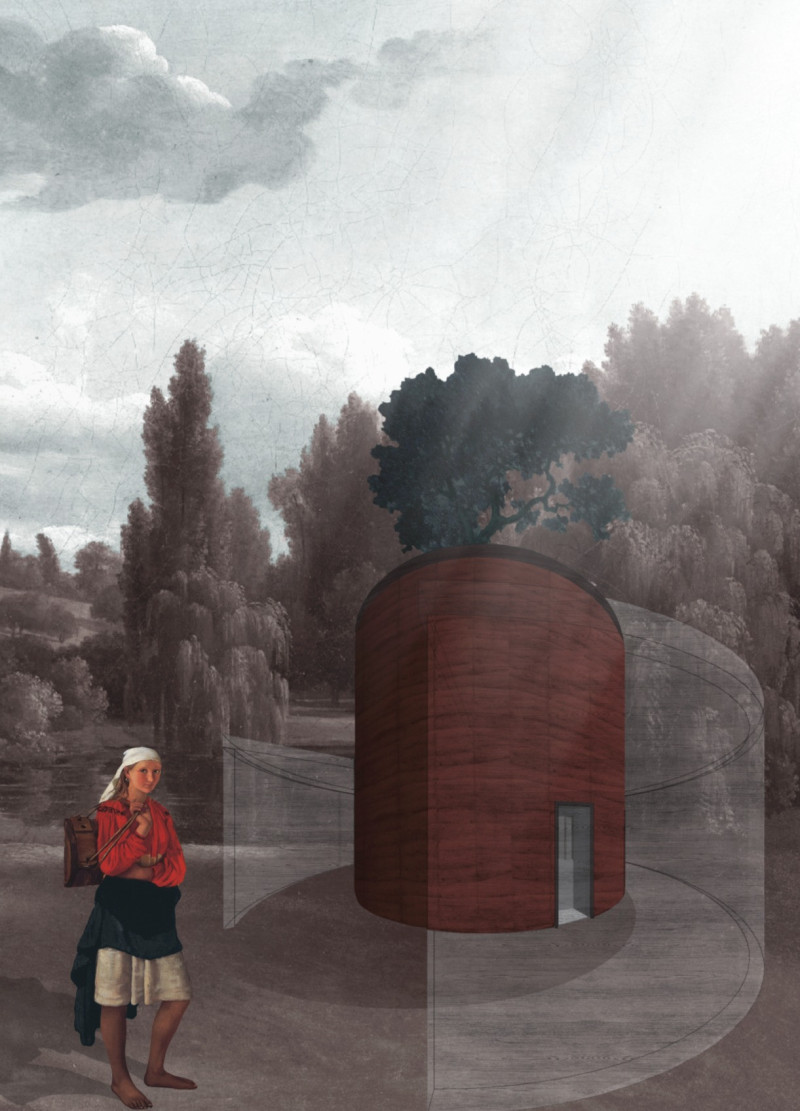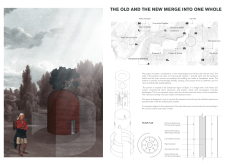5 key facts about this project
The design project located in the Catalonian region of Spain presents a thoughtful convergence of history and contemporary architecture. Situated in a village rich with centuries-old stone structures and surrounded by scenic mountain landscapes, the pavilion serves as an exhibition space. The design aims to blend old and new technologies, establishing a connection between the built environment and the natural world.
Materials
The materials chosen for the pavilion play a key role in its overall character. The walls are made of rammed earth that has been used for centuries. This choice ties the building to its historical context and offers benefits like thermal and acoustic insulation. Using traditional materials highlights a commitment to sustainability and reflects the local building heritage.
Layout and Accessibility
The layout encourages movement and interaction. With multiple entrances and exits, visitors can easily navigate between indoor areas and outdoor spaces. This design not only improves accessibility but also enhances the experience, allowing people to engage with the exhibition while enjoying the surrounding environment. As visitors move through, they discover different perspectives and connections.
Central Element
A central tree stands out within the design, acting as an important visual and conceptual focal point. It symbolizes the project's connection to nature, reinforcing the relationship between the building and its landscape. The tree introduces an organic quality that invites contemplation, encouraging visitors to pause and appreciate both the architecture and the natural beauty surrounding it.
Light and Transparency
The use of transparent wood for the partitions ensures that natural light floods the interior spaces. This choice creates a warm atmosphere and fosters a visual link between inside and outside. The transparency allows for views of the surrounding landscape, creating an experience that prompts occupants to engage more directly with both their environment and the building itself.
The design successfully integrates its historical roots with contemporary elements. The careful balance of light, material, and natural features results in a space that invites community interaction and cultural dialogue. By embracing its context, the pavilion stands as a welcoming venue for exploration and creative expression.



















































